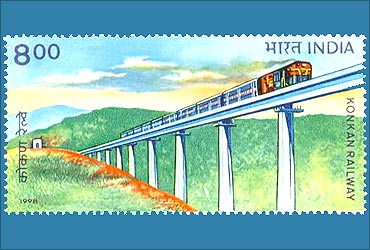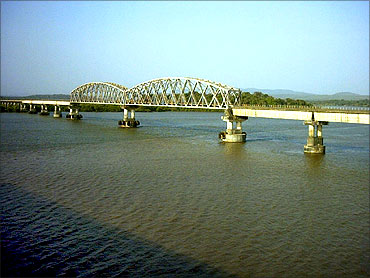
One of India's biggest engineering marvels, the Konkan Railway, has completed 20 glorious years since its foundation was laid in October 15, 1990.
The Konkan Railway Corporation Ltd was incorporated in July, 1990, with a senior railway official, E Sreedharan, as its first chairman-cum-managing director.
The construction of the Konkan Railway, which connects Maharashtra, Goa and Karnataka has been hailed is one of the biggest and most difficult engineering railway projects carried out this century in South Asia.
In October 1997, Sreedharan took up the responsibility of constructing the marvellous Delhi Metro Project.
. . .
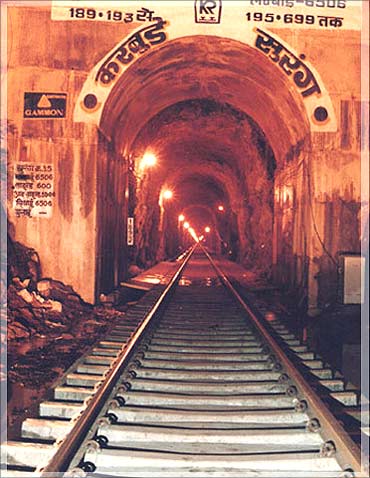
The topography of the West Coast with mountains, innumerable creeks, criss crossing rivers and streams had made the Konkan route a distant dream for a long time.
. . .

An engineer pointed during a function on January 25, 1998, the day before commissioning of the Railway, "If people had considered this merely as a job, it would have taken 25 years to complete."
It took seven years to build India's most difficult railway route. The first train on the route was flagged off on June 26, 1998.
The two important port cities Mangalore and Mumbai were finally connected by the railway network, offering travelers and transporters a easier, cost effective and faster commuting system.
. . .

KRCL was initially conceptualised to be constructed at an estimated cost of Rs 800 crore (Rs 8 billion).
However, cost on completion escalated by over four times to Rs 3,500 crore (Rs 35 billion).

However, the Konkan Railway is now out of the red. For the first time it reported a net profit of around Rs 3 crore (Rs 30 million) in 2009-10.
The operating ratio (rupees spent out of every hundred rupees earned) improved to 77.78 per cent, compared to 83.82 per cent in the year-ago period.
Today, 86 passenger services operate each week in either direction.
. . .
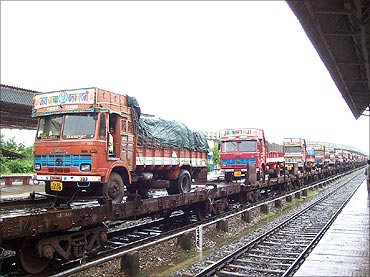
The RO-RO service of the Konkan Railway Corporation is an innovative service being run by it on its route whereby loaded goods trucks are carried piggy back on rail flats. The service is being run only on Konkan Railway and has earned the Corporation over Rs 120 crore (Rs 1.2 billion) since its inception in 1999.
RO-RO is an innovative means of establishing a synergistic relationship between the railways and the roadways instead of being competitors. The service has helped the railways to get back the piecemeal traffic which had got diverted to the road sector.
Besides, innovative sevices, the Kokan Railway has bagged patents for its innovations. KRCL has to its credit 18 patents granted for Sky Bus, Anti-collision Device (ACD) and Track Identification System (TIS) in India and abroad.
. . .
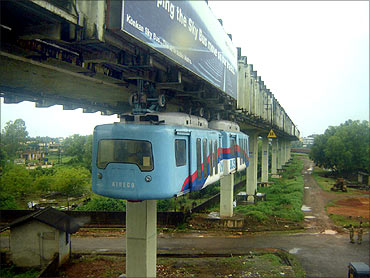
Skybus
The Skybus has been developed by Konkan Railways as an innovative, environment-friendly and cost effective alternative rail based transportation system.
The Konkan Railway Corporation (KRC) has now invited global expression of interest for its "innovative and prestigious" sky bus project.
Stating that "feasibility of (sky bus) technology has been demonstrated by conducting real life trials up to speeds of 70 kmph on test track at Goa (India)," the KRC's notice inviting global expression of interest (GEoI) has invited interested parties to submit their request for qualifications (RFQ) for "further development of the technology and its commercial deployment on revenue sharing or similar model."
It offers better speed, greater route flexibility and comfortable urban travel. Its construction is economic and faster requiring minimal land and at the same time creates additional space.
. . .
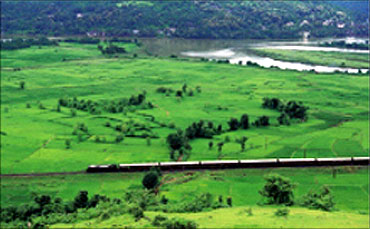
Another impressive innovation is GPS-based anti-collision device (ACD). ACD is designed to prevent collisions between trains as well as road vehicles at level crossings and any other obstacles on the railway.
ACD is designed to detect trains within a range of 3km. It will also protect trains if the separation distance between them is less than 2km, and it should prevent trains from passing signals at danger.ACD equipment is installed in train cabs, at the rear of locomotive-hauled trains, at level crossings, and in stations.
. . .
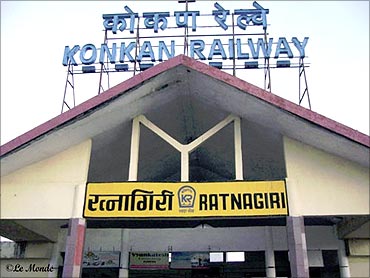
Future plans
As the Konkan Railways celebrates it 20th foundation day, it has big plans in the years to come.
The Maharasthtra-Karnataka sector of the Konkan railway is expected to be electrified over the next couple of years.
. . .
